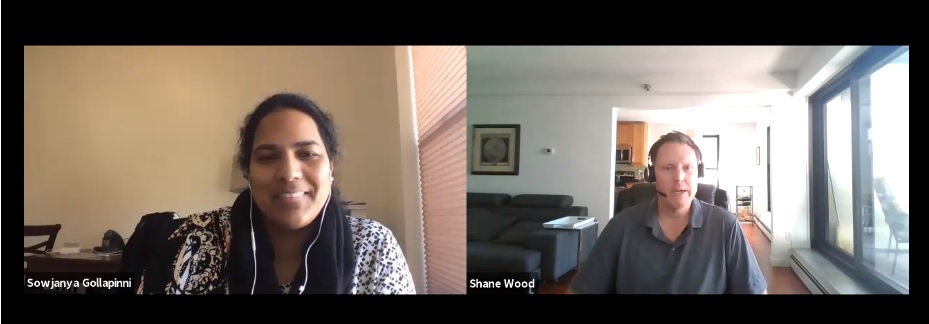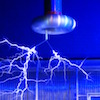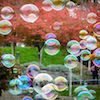Friday Flyer - September 11, 2020
This is the first Friday Flyer of the 2020–2021 school year, a year like none other. We encourage you to lean on your QuarkNet colleagues and staff for support. Please send e-mail to the staff with your ideas about how we can help as we all navigate these challenging times together.

Spotlight on the MicroBooNE Detector
You have probably caught on that there are many acronyms used in the particle physics community: CERN, FNAL, CMS, ATLAS, DUNE, MINERvA, NOvA, ICARUS, and the list goes on (and on). Here's another fun one: MicroBooNE, which stands for Micro-scale Booster Neutrino Experiment. This liquid argon time projection chamber (yep, LArTPC) neutrino experiment is located in the Booster Neutrino Beam (you guessed it, BNB) beamline at Fermi National Accelerator Laboratory (uh huh, FNAL; a.k.a. Fermilab). The detector is filled with 170 tons of liquid argon (it is an LArTPC, after all) and has been in operation since 2015.
Learn more about MicroBooNE. Shane recently met with Los Alamos National Laboratory (LANL) neutrino physicist Sowjanya Gollapinni on Zoom to ask a few questions about MicroBooNE. Access the ~7-minute interview with Sowjanya. (You also may want to check out Sowjanya's Why I Love Neutrinos segment on the Fermilab YouTube channel from a few years back.)

Sowjanya Gollapinni about MicroBooNE.

News from QuarkNet Central
The next Fermilab trivia contest (#FermilabTrivia) will be held on Zoom tomorrow, Saturday, September 12, starting at 11:00 AM U.S. Central Time; register at https://t.co/9hUszAIxlV. At the end of the game, there will be a question for the audience too. Have fun, win prizes, and learn more about Fermilab!
Saturday Morning Physics at Fermilab is an opportunity for high school students to further their understanding and appreciation of modern physics, and this fall it's going virtual! Student applications are due by September 21, so please pass this information along to your students soon. Learn more from the SMP team, including a link to the application.
QuarkNet Educational Discussions (QED) is an opportunity for QuarkNet teachers and staff to get together virtually a couple of times each month to share ideas, ask questions, and connect with QuarkNet colleagues. Our next meeting will take place on September 23, so be sure to mark your calendar! Here are more details.
We recently learned some sad news out of our Kansas State Center. Curt Parry, a well-liked teacher active in QuarkNet and in the Physics/Chemistry Modeling communities, died in a motorcycle accident last month. We extend our deepest sympathies to Curt's family, friends, colleagues, and students. He will be missed by many. Read Curt's obituary.

Physics Experiment Roundup
Scientists describe how the Deep Underground Neutrino Experiment (DUNE), now under construction in the U.S., could search for supernova neutrinos. Crews at the SLAC National Accelerator Laboratory have taken the largest-ever digital photo by a camera that will eventually be installed at the Rubin Observatory in Chile. The 3200-megapixel image would require 378 4K ultra-high-definition TV screens to view in full size.
From symmetry, physicists on experiments at the LHC are redesigning their searches to look for long-lived particles that have yet to be detected. Also from symmetry: LHC physicists are beginning to study interactions of the Higgs boson with lighter particles. Higgs interactions that have been studied so far have focused on its interactions with more massive particles, like the top quarks, bottom quarks, and tau leptons.

Resources
Several QuarkNet teachers were able to try out some Data Portfolio activities in a virtual way this summer in Zoom workshops. A reminder that several activities include ideas on how to do the activity virtually, viewable in the comments section for each activity (viewable when logged in) or summarized. Another resource: David Sokoloff from the University of Oregon has made available several Interactive Lecture Demonstrations adapted for distance learning.
"Hi there, physics fans!" Since our August 7th Friday Flyer Super Summer Special, Don Lincoln has added several episodes to his Subatomic Stories series. Here they are:
- How we know black holes exist
- Is the Planck length really the smallest?
- What mysteries might dark matter solve?
- Why dark matter seems likely
- Dark energy and the fate of the universe

Just for Fun
The folks at xkcd make an attempt to change the particle names in the Standard Model.
Schools are using a variety of different learning models this fall: in-person, hybrid, virtual, distance learning, blended learning, etc. Here's a a new one: Simple Hybrid Model, brought to you by One Funny Mother.
QuarkNet Staff:
Mark Adams: adams@fnal.gov
Ken Cecire: kcecire@nd.edu
Spencer Pasero: spasero@fnal.gov
Shane Wood: swood5@nd.edu
